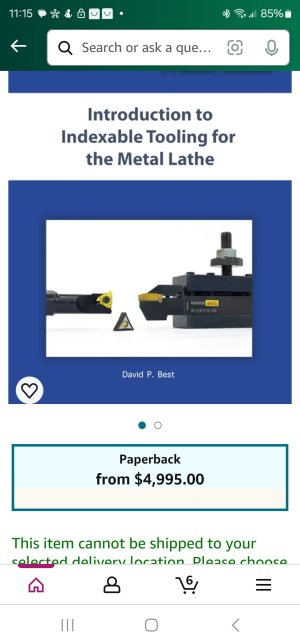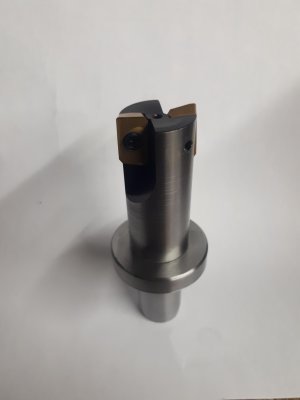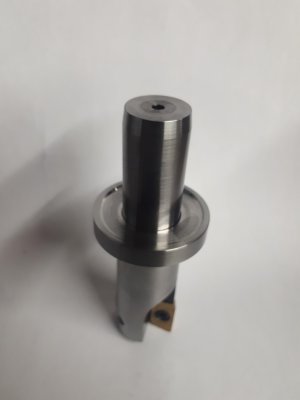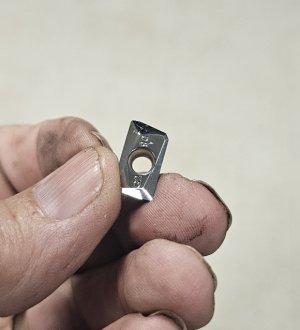-
Scam Alert. Members are reminded to NOT send money to buy anything. Don't buy things remote and have it shipped - go get it yourself, pay in person, and take your equipment with you. Scammers have burned people on this forum. Urgency, secrecy, excuses, selling for friend, newish members, FUD, are RED FLAGS. A video conference call is not adequate assurance. Face to face interactions are required. Please report suspicions to the forum admins. Stay Safe - anyone can get scammed.
-
Several Regions have held meetups already, but others are being planned or are evaluating the interest. The Calgary Area Meetup is set for Saturday July 12th at 10am. The signup thread is here! Arbutus has also explored interest in a Fraser Valley meetup but it seems members either missed his thread or had other plans. Let him know if you are interested in a meetup later in the year by posting here! Slowpoke is trying to pull together an Ottawa area meetup later this summer. No date has been selected yet, so let him know if you are interested here! We are not aware of any other meetups being planned this year. If you are interested in doing something in your area, let everyone know and make it happen! Meetups are a great way to make new machining friends and get hands on help in your area. Don’t be shy, sign up and come, or plan your own meetup!
You are using an out of date browser. It may not display this or other websites correctly.
You should upgrade or use an alternative browser.
You should upgrade or use an alternative browser.
Small Facemill
- Thread starter kstrauss
- Start date
APKT1604 inserts and it would great to use the same ones everywhere. Unfortunately, I don't think that it is possible to make a 3/4-inch facemill using the larger inserts.
I am virtually certain I have a 3/4 tool that uses these inserts Ken. I'll check later today. It is a Wierd looking duck though..... Technically it's a drill, but I have milled with it just fine.
We are talking about the fit of two inserts sold under the SAME part number IAW the ISO part number code chart you posted above. That’s what caught me on the Accusize tool I bought and subsequently returned.
Yes. That's why I suggested asking Accusize if they would let you drill out the pocket without affecting returnability. You and Accusize both benefit from knowing if that works. You gain knowledge all of us could benefit from, and accusize gets Ammo to use with their suppliers to get a better product for everyone.
While we are discussing inserts, does anyone here have a decent set of rules for determining if the part number is ISO or ANSI?
I know that 3 numbers is almost always ANSI, and 4 or more is almost always ISO. The keywords above is "Almost Always".
It's a RPIA to have to do a Google search on the equivalents.
I know that 3 numbers is almost always ANSI, and 4 or more is almost always ISO. The keywords above is "Almost Always".
It's a RPIA to have to do a Google search on the equivalents.
ChazzC
Ultra Member
Get the David P. Best book (it's on my wishlist):While we are discussing inserts, does anyone here have a decent set of rules for determining if the part number is ISO or ANSI?
I know that 3 numbers is almost always ANSI, and 4 or more is almost always ISO. The keywords above is "Almost Always".
It's a RPIA to have to do a Google search on the equivalents.
https://a.co/d/daT7zAy
Or the handy chart I attached (one of many available, but I like this one because it's simple).
Attachments
MrWhoopee
Ultra Member
I have several milling cutters that use the APKT1135 inserts, starting at 10mm and up to 30mm. They get used a lot, especially the 20 and 25 mm. I also have a 40mm that uses the APKT1604 inserts, but by the time I get to that size I prefer to use my 50mm facemill that uses the SEKT/SEHT inserts unless I need a square shoulder. The higher rake angle of the SEKT inserts makes them cut more freely, less of a beating on everything. Looking for a 25-40 mm cutter that uses the SEKT. I know Shars has them, just looking for a better deal.
I bought a lot of the cutters mentioned by @ChazzC that use the TPG inserts when was in the business. I bought them because we already used the TPG inserts for the lathes and the cutters were pretty cheap, especially in sets. Having little/no top rake, the cutting action is more brute force than shear. I also had to keep a stock of the clamp screws, which are prone to breaking.
I bought a lot of the cutters mentioned by @ChazzC that use the TPG inserts when was in the business. I bought them because we already used the TPG inserts for the lathes and the cutters were pretty cheap, especially in sets. Having little/no top rake, the cutting action is more brute force than shear. I also had to keep a stock of the clamp screws, which are prone to breaking.
Get the David P. Best book (it's on my wishlist):
It's gunna be on your wish list a very long time......

At 5K US, I'm not interested!
But joking aside, I have the newer version which I got for 25$ beaver bucks. I agree that it's a good book and I learned a lot from it. But it doesn't answer the simple question I asked above.
It only explains both standards. But doesn't give you any rules about how to know which is which other than a few generalities I already knew.
For, example, I know that 432 is ANSI, and I know that 160404 is ISO. But when you add in a decimal or 4 digits instead of 3 or 6, how do you know which one it is when you are not familiar with it?
ChazzC
Ultra Member
That I can't help you with: I usually search based on the "size," then use the chart to see what the trailing numbers mean.It's gunna be on your wish list a very long time......
View attachment 54511
At 5K US, I'm not interested!
But joking aside, I have the newer version which I got for 25$ beaver bucks. I agree that it's a good book and I learned a lot from it. But it doesn't answer the simple question I asked above.
It only explains both standards. But doesn't give you any rules about how to know which is which other than a few generalities I already knew.
For, example, I know that 432 is ANSI, and I know that 160404 is ISO. But when you add in a decimal or 4 digits instead of 3 or 6, how do you know which one it is when you are not familiar with it?
That I can't help you with: I usually search based on the "size," then use the chart to see what the trailing numbers mean.
Ya, that's sorta what I do too. If you plug a known part number into Google it will usually lead to something in one or the other system.
I was just hoping somebody on here has some handy rules of thumb for that.
I am virtually certain I have a 3/4 tool that uses these inserts Ken. I'll check later today. It is a Wierd looking duck though..... Technically it's a drill, but I have milled with it just fine.
Unfortunately, I don't think that it is possible to make a 3/4-inch facemill using the larger inserts.
You might be right. Accusize does sell smaller enndmills all the way down to 3/8 inch with APKT inserts but these use the smaller 1/4" APKT inserts not the 3/8 inserts.
As far as I can tell, the smallest endmill they sell with the larger 3/8 insert is 1". Any smaller than that they use 1/4" APKT Inserts.
I was totally wrong about my own smaller endmills. Apparently, I went with WNMG on those to commonize with what I use on most of my Lathe Insert Tooling. So it's still one of the three carbide inserts I use just not the APKT.
Yes. That's why I suggested asking Accusize if they would let you drill out the pocket without affecting returnability. You and Accusize both benefit from knowing if that works. You gain knowledge all of us could benefit from, and accusize gets Ammo to use with their suppliers to get a better product for everyone.
I could be wrong but I would expect the tool holders to be fairly hard. With that and not wanting to sink a bunch of time in experimenting with mods it wouldn’t be worth the trouble for me if I could just order an off the shelf from Shars.
Actually the only reason I hadn’t ordered from Shars was the P/N was out of stock.
Good thought to consider the mod though…..as long as none of the other dimensions were incompatible.
D 😎
I could be wrong but I would expect the tool holders to be fairly hard. With that and not wanting to sink a bunch of time in experimenting with mods it wouldn’t be worth the trouble for me if I could just order an off the shelf from Shars.
I have modified several insert tools. Usually to make a bigger one fit a smaller holder. Some may be harder than others, but I've never had a problem doing it. Even it were hard, a carbide endmill should clobber any insert holder. Nice thing about making a clearance hole is that it's placement is not critical at all.
Dan Dubeau
Ultra Member
I bought the 1" accusize version a couple years ago. I hard turned the shank down to 3/4", and pressed on a TTS stop collar. I've been impressed with it, and have had no issues with it. I also have the 2" face mill that uses the same apkt 1604 inserts and it's nice having shared consumables. I will at some point pick up a smaller one that uses the smaller inserts, but for now I'm good with this one. I still need to make a TTS shank for the face mill, but use it a lot with an R8 one in the manual mill.




I will at some point pick up a smaller one that uses the smaller inserts,
I'm not there yet. Tooling up with yet another insert size for steel, stainless, and Aluminium with small and large noses (6 boxes of 10 inserts) pretty much stops me cold. It's easier to buy a few more hss and Solid Carbide endmills in the needed size range - under 1 inch. Maybe in time, I'll change my mind.
Dan Dubeau
Ultra Member
Ya, when I was running the CNC shop I didn't see much value for what we did in insert tooling below 3/4. Solid cutters were better and more versatile. I'm sure there are different applications where it would be the better choice, but for our work and machines it didn't make much sense. My only interest in them at home is purely from a novelty standpoint lol. Like the fact that most fishing lures are designed to catch fisherman.......
Like the fact that most fishing lures are designed to catch fisherman.......
I love this! Ain't it the truth!
I think a lot of tooling is the same!
Have you found a source of the press on collars other than Tormach or did you make your own? I've been using modified (deeper recess to accommodate the R8 collet) shaft collars (https://www.amazon.ca/gp/product/B09PYZ4QV8) which work OK.I bought the 1" accusize version a couple years ago. I hard turned the shank down to 3/4", and pressed on a TTS stop collar. I've been impressed with it, and have had no issues with it.
Dan Dubeau
Ultra Member
I made that one. It's been a while, but I think its 4140 (maybe o1?) and I think I hardened it. That was one reason I went with the 1" version was so I had a step to press the collar against. Not sure I'd trust a bolt on collar, but I have unfounded trust issues for stuff like that 😀. I'm sure it would probably work fine if one didn't slam tools in and out and was careful with it. I'd always worry about the pullback force of the drawbar shifting my Z reference over time. It would be shifting it in the safe direction though, so not as bad but still something to watch out for.

